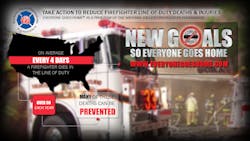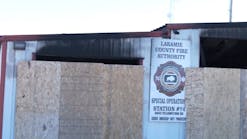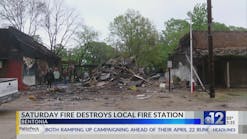Editor’s note: Discuss fire prevention, community risk reduction and NFFF’s New Goals initiative to reduce firefighter line-of-duty deaths to under 50 annually in the following Firehouse.com Forums:
- To build support for fire prevention and community risk reduction, what qualifications/attributes should we look for in new recruits?
- Is the general perception toward prevention in your department positive or negative? Why?
And find more information on the NFFF’s New Goals initiative at www.everyonegoeshome.com/new-goals.
Let’s be honest: firefighters typically shun involvement in fire prevention. In an article last year, Jim Crawford, project manager for Vision 20/20, a national organization for fire loss prevention, spoke about his experience trying to “sell” fire prevention: “Nothing seemed to make the eyes roll like talking with some (not all) firefighters about prevention. In other departments with which I had experience, the reaction was even more pronounced. Forget eye rolling, anyone in a white shirt was either an administration goon or a prevention goon. Neither was thought to be deserving of real respect or attention.”
If your department is like most, this recollection rings true. In general, fire prevention is not a coveted assignment. Although some departments do a better job integrating prevention and community education than others, there is still an overall perception that prevention lies outside the “core” duties of a firefighter., The tasks associated with prevention are considered less exciting, require less work and bravery, and are simply less important than responding to fires, traffic collisions and other emergency calls.
I am hardly breaking new ground in saying that this attitude must change. But how?
Change Recruiting/Training Practices
Increasing respect for and involvement in fire prevention involves cultural change, which is a slow process. But it starts with subtle changes in who we hire and how we train.
In many cities, men and women who want to be firefighter candidates spend years building the physical strength and gaining experience—as EMTs, Explorers and others—that will make them suitable candidates. But what if our hiring qualifications also stressed the need for skills in community involvement, public education, and volunteerism? Would these men and women, who so desperately want the chance to compete for the job, turn away and go somewhere else? I doubt it.
My point is simple. We can easily begin to build more support for prevention by stressing its importance in the hiring process. New recruits should not only be chosen for their physical strength or their ability to memorize mission statements or facts and figures about a fire department. They should also display the tenacity that will be needed to advocate support for prevention and resist funding cuts; the technical skills that will allow them to analyze data and to identify risks; the compassion that will enable them to enter a home in a high-risk area and assist the residents with obtaining working smoke alarms and emergency plans.
The training we provide to recruit and incumbent firefighters should build on these attributes. The TAMPA2 report advocates teaching prevention “as an offensive attack strategy. Prevention and community risk reduction must be elevated to the level of an offensive fire attack—in terms of initial training and overall culture—so that it becomes a tactical priority for every firefighter.” Most firefighter academies do not spend much time on prevention and risk reduction. We can change that, and when we do, it will begin to right the imbalance that currently exists between prevention and suppression.
Tap Into Individual Strengths
But we don’t have to sit around waiting for a new generation of firefighters to enter our stations to begin work toward this goal. I believe strongly that many current firefighters would develop an interest in prevention if they were approached in the right way. We can improve the acceptance and propagation of fire prevention as an offensive firefighting tactic by presenting it in the proper context.
First, let’s examine the wrong way of assigning prevention and community risk reduction duties: Take the firefighter who’s not really excelling at the job, or the one who’s on light duty for an injury, and assign them to the prevention bureau. This underscores 1) that prevention lies outside the core firefighter job, and 2) that the worst or the weakest firefighters get assigned to prevention. Too often the bureau is labeled as the sanctuary for the sick, the lame or the lazy.
Instead, prevention needs to be integrated into every firefighter’s job. And we can do that by tapping into the interests or strengths of our individual firefighters. Is there a Twitter/Facebook addict on your crew? Maybe they’re perfect to design and lead a social media campaign about fireworks safety, or monthly smoke alarm reminders. The resident “techie” may be well-suited to do data analysis that helps the department identify high-risk areas or activities within your community. Community risk reduction cannot just happen at the administration level, or by someone who sits behind a desk all day. It requires an integral understanding of the community—the kind of understanding that firefighters build naturally, because they spend so much time in their first-due areas interacting with the people.
Reward Accomplishments
Finally, the fire service needs to take a long, hard look at the behaviors we typically reward. This is an argument that dates back—at least—to the life safety summit held in Novato, Calif., in 2007. In summing up this line of reasoning, the authors of the TAMPA2 report noted, “Safe acts should be rewarded. These efforts should include challenging the traditional definition of what it means to be a ‘heroic’ firefighter … More recognition should be given to firefighters who fight, often unrecognized, for better building codes, or who work ceaselessly at the company level to check smoke alarms and generally help residents reduce their risks of death or injury.”
Clearly, firefighters must always be ready to put their lives on the line to save others, but we should be up front about the fact that our potential to save lives is greatly expanded through prevention. Just consider the firefighter who spends time crafting and delivering a fire safety message to a local elementary school, speaks with children individually after the presentation, and then follows up several weeks later to determine whether the education stuck. The “save” that can result from these actions may not be as dramatic as stumbling out of a smoke-filled home with a small child in our hands—but it is just as important, and has the potential to touch many more lives.
Fortunately, rewards and recognition are the easiest ways to support prevention. In most cases, it doesn’t even have to require administrative changes in formal award criteria, although we should seriously consider formalizing this incentive. It can be as simple as a few words of recognition from the captain in front of the crew, a mention up the ranks, or even just being excused from a chore when a company officer notices one of his firefighter taking action to reduce community risk. Each of these can show organizational support for prevention, in turn chiseling away at the sometimes thoughtless negative reaction to prevention duties.
A New Attitude
Community risk reduction is a growing concept in the fire service. There are even fire prevention experts who suggest we should change the name of our departments, in recognition of how large a role prevention, education, and risk mitigation play in meeting our missions. Why I’m not sure I’d go that far, we do need to take steps to push prevention out of the shadows and place it front and center. This obviously won’t happen overnight, but there are steps we can all take—no matter our rank or position—to change rolling eyes into nodding heads.
TIMOTHY E. SENDELBACH is the Editor-in-Chief for Firehouse. A 29-year student and educator of the fire and emergency services, he is responsible for the content and editorial direction of Firehouse® Magazine, Firehouse.com, Firehouse Expo, Firehouse World and related products. He has served as an assistant fire chief with the North Las Vegas, NV, Fire Department, as the chief of training for Savannah, GA, Fire & Emergency Services and as assistant fire chief for Missouri City, TX, Fire & Rescue Services. He is a credentialed Chief Fire Officer and Chief Training Officer and has earned a master’s degree in leadership from Bellevue University, bachelor’s degrees in fire administration and arson and an associate’s degree in emergency medical care from Eastern Kentucky University. You can e-mail him at [email protected].






